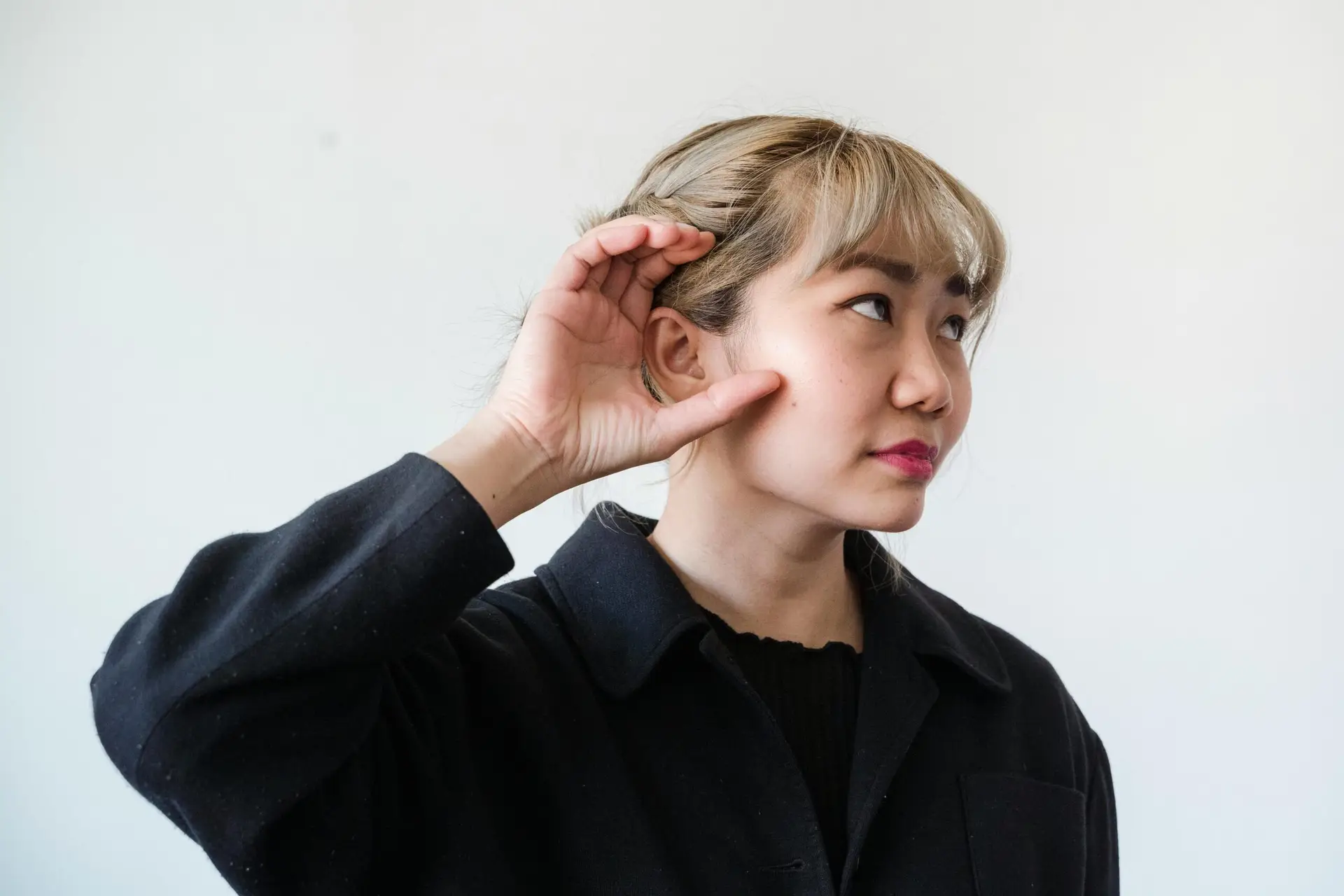
If you’re searching “Ménière’s doctor near me” in Sarasota, Bradenton, or Lakewood Ranch, Florida, odds are you—or someone you love—is dealing with unpredictable vertigo, ear fullness, fluctuating hearing, tinnitus, and the anxiety that comes with never knowing when the next episode will strike. You’re not alone. Every week at Lavender Family Chiropractic in Sarasota, we meet people who have seen multiple specialists, tried medications or low-sodium diets, worked through the Epley maneuver, and still feel stuck in a cycle of dizzy spells, fatigue, and fear.
There’s hope. Our Upper Cervical Chiropractic approach focuses on the delicate alignment of the top two bones in the neck—the atlas (C1) and axis (C2)—which cradle the brainstem and play a direct role in balance, posture, and autonomic regulation. When these structures are off by even fractions of a millimeter, they can distort the signals your brain uses to orient your body in space, disrupt fluid dynamics around the inner ear, and increase sensitivity to motion. By gently and precisely correcting the upper neck—without twisting, popping, or yanking—we help the nervous system settle, which can reduce the frequency, intensity, and duration of dizziness and other vestibular symptoms.
Below, we’ll break down Ménière’s disease, its hallmark symptoms, how it overlaps with BPPV, vestibular neuritis, and broader vestibular dysfunction, and why a measurable, image-guided upper cervical plan can be the missing link on your path to real, lasting relief.
Meniere’s Doctor Near Me: What Is Ménière’s Disease? A Straightforward Overview
Ménière’s disease is a chronic, often cyclical condition of the inner ear characterized by episodic vertigo, fluctuating hearing loss (often low-frequency at first), tinnitus (ringing, buzzing, or roaring), and aural fullness (pressure in the ear). Episodes can last from 20 minutes to several hours, sometimes followed by a “hangover” of imbalance, nausea, and brain fog that lingers into the next day. Many patients feel motion-sensitive, develop anxiety about driving, and withdraw from activities they used to love.
While the inner ear fluid system (endolymph and perilymph) is typically implicated, the story is rarely just about the ear. Nervous system regulation, blood flow dynamics, CSF (cerebrospinal fluid) movement, and cervical proprioception all influence how stable—or unstable—your balance “software” feels in daily life. That’s why two people with similar ear findings can have dramatically different symptom severity: the brainstem–vestibular loop is either calm and coordinated…or it isn’t.
Ménière’s, Vertigo, and the Vestibular Family of Conditions
Although Ménière’s has a classic “quad” of symptoms, many patients also carry labels like BPPV, vestibular neuritis, labyrinthitis, vestibular hypofunction, PPPD (persistent postural-perceptual dizziness), or vestibular migraine. It’s common to see overlap.
- BPPV (Benign Paroxysmal Positional Vertigo): Small calcium crystals (“otoconia”) migrate into the semicircular canals. This can trigger brief, positional spinning with head movements. Repositioning maneuvers (e.g., Epley) can help, but recurring BPPV may indicate an underlying stability issue in the upper cervical–brainstem system that keeps allowing recurrent episodes.
- Vestibular neuritis and labyrinthitis: These often follow a viral illness. Patients can be left with prolonged imbalance or motion sensitivity. If brainstem irritation and cervical asymmetry persist, the recovery can plateau—despite therapy.
- Vestibular hypofunction and chronic dizziness: Some people don’t spin; they feel “floaty,” off-balance, or like the ground isn’t stable. This can reflect a mismatch between the information coming from the eyes, inner ear, and neck. The upper neck is the body’s GPS mast; when it’s tilted, the map is wrong.
Where do these converge? At the upper cervical spine. When the atlas is misaligned, its close relationship with the brainstem, vertebral arteries, venous drainage, cranial nerves, and postural reflexes can set the stage for vestibular dysregulation—the common denominator that ties together Ménière’s, BPPV recurrences, neuritis aftershocks, and stubborn dizziness.
The Upper Cervical–Vestibular Connection (Why the Top of the Neck Matters)
1) Brainstem Modulation
The lower brainstem receives and integrates vestibular input, gaze stability data, and proprioception from the neck. Atlas (C1) misalignment can subtly irritate this area, distorting balance signals and heightening motion sensitivity.
2) Blood and CSF Dynamics
The vertebral arteries and venous drainage channels course through the neck to the hindbrain and inner ear region. If there’s mechanical stress or torsion from misalignment, it may alter perfusion and drainage—contributing to pressure changes that patients perceive as ear fullness or head pressure.
3) Cranial Nerve Irritation
The vestibulocochlear nerve (CN VIII) interacts with other cranial nerves influenced by the cervical environment. Abnormal cervical input can amplify tinnitus and aural symptoms by way of central sensitization.
4) Proprioceptive Mismatch
Your brain merges data from eyes, ears, and neck to compute balance. If the neck says your head is tilted (even when it isn’t), you’ll experience disequilibrium, “boat deck” sensations, or intolerance to busy visual environments.
Bottom line: If the upper neck isn’t right, the vestibular system often isn’t either.
Upper Cervical Chiropractic at Lavender Family Chiropractic
At Lavender Family Chiropractic (Sarasota), we practice a gentle, precise, and measured upper cervical approach—centered on the Knee Chest Upper Cervical technique. Unlike traditional chiropractic that may involve twisting or popping, our corrections are calculated adjustments to restore alignment with the least force necessary.
What Makes Our Process Different
- 3D CBCT Imaging: We capture your atlas and axis in three dimensions to measure exact misalignment vectors (down to fractions of a degree). This is not a one-size-fits-all approach—it’s you-specific correction.
- Tytron Functional Nervous System Scans: This noninvasive scan assesses paraspinal thermal patterns—a window into autonomic nerve function and stress. We use it on day one and at checkpoints to track objective progress.
- Gentle, No-Twisting Adjustments: We restore alignment using a focused, light force in a precise direction. Many patients are surprised at how subtle the correction feels—and how profound the results can be.
- Hold > Re-Adjust Philosophy: In upper cervical care, the goal is not repeated cracking; it’s to correct and hold. The longer your atlas stays clear, the more your nervous system stabilizes and symptoms calm down.
- Measured Follow-Up: We re-scan and re-evaluate to confirm your nervous system is holding and healing, adjusting only when it’s clinically indicated.
What Is Upper Cervical Chiropractic Care?
Upper Cervical Chiropractic care is a highly specialized branch of chiropractic that focuses on the most delicate and powerful area of your spine — the upper neck, where the brainstem connects to the body. The top two bones in your neck, the atlas (C1) and axis (C2), protect this vital area and play a crucial role in regulating balance, posture, and communication between the brain and the rest of the body. Even a small misalignment in this area can disrupt nerve signals, blood flow, and cerebrospinal fluid (CSF) movement, leading to symptoms like dizziness, vertigo, headaches, migraines, ear fullness, neck pain, and fatigue.
At Lavender Family Chiropractic in Sarasota, we specialize in Knee Chest Upper Cervical care—a gentle, precise, and science-based approach that corrects misalignments without twisting, cracking, or popping. Using 3D CBCT imaging, we measure the exact angle and degree of misalignment in your upper neck, and with Tytron functional nervous system scans, we monitor how your body responds to each correction. This allows us to deliver individualized care that restores the body’s natural balance and promotes long-term healing.
When the atlas is realigned, pressure on the brainstem and nerves is reduced, allowing your body’s natural healing mechanisms to function properly. Many patients notice improved balance, reduced vertigo or Ménière’s symptoms, clearer thinking, better sleep, and overall vitality.
Upper Cervical Chiropractic isn’t just about relieving symptoms—it’s about restoring function so your body can heal from within. It’s the foundation for balance, health, and wellness from the top down.
Your Care Team
You’ll work with our doctors—Dr. Rusty Lavender, Dr. Jacob Temple, and Dr. Will Guzinski—who are passionate about helping patients with vertigo, Ménière’s disease, BPPV, vestibular neuritis, PPPD, vestibular migraine, and other complex dizziness conditions.
What Patients Commonly Report as Care Progresses
- Fewer and shorter vertigo episodes
- Less ear pressure and “underwater” sensation
- Reduced tinnitus intensity or frequency
- Better balance and confidence while walking or driving
- Improved mental clarity and reduced fatigue
- Fewer headaches and neck tension
- More predictability in daily life—less fear of the next attack
Every case is unique, and we never claim to “cure” disease. Our focus is restoring the system that controls balance so your body can do what it’s designed to do: self-regulate and heal.
Step-by-Step: What to Expect at Lavender Family Chiropractic
1) Consultation & History
We listen—to your story, triggers, patterns, wins, losses, and goals. We want to understand where you’ve been and where you want to go.
2) Advanced Testing
We use 3D CBCT to see the exact anatomy of your upper cervical spine and Tytron scans to assess autonomic patterns. If appropriate, we may also perform posture and balance assessments.
3) Personalized Care Plan
Your doctor maps a correction strategy matching your unique misalignment vector. We’ll explain it in plain English and set checkpoints so you can see and feel progress.
4) Precise Upper Cervical Correction
Using a gentle, targeted approach, we correct atlas/axis alignment. No twisting, popping, or “seeing stars.” Many patients feel a sense of lightness or clarity even after the first correction.
5) Re-Scans & Outcome Tracking
We confirm objective changes (Tytron) and subjective improvements (symptoms, daily function). The goal: longer holds and fewer re-adjustments over time.
6) Stabilization & Wellness
As your system stabilizes, visit frequency tapers. Many vestibular patients maintain periodic check-ins to keep the upper neck clear—especially around travel, high-stress seasons, or after minor bumps.
Why Ménière’s Patients Often Need More Than Symptom Management
Common medical approaches—diuretics, anti-nausea meds, vestibular suppressants, steroids, low-sodium diets—can make episodes more manageable. Some patients add vestibular rehab or Epley maneuvers if BPPV co-exists. These help many people. But if the system generating the signals remains dysregulated (brainstem–neck mismatch), symptoms can cycle back.
Upper cervical care fits in as a root-cause strategy: improve neurovascular and proprioceptive balance so that ears, eyes, and neck are telling the same story. When inputs match, your brain can relax—and that’s when breakthroughs happen.
Who We Serve (Local SEO + Community Reach)
People visit us from Sarasota, Bradenton, Lakewood Ranch, Parrish, Ellenton, Venice, Osprey, Punta Gorda, St. Petersburg, Siesta Key, Longboat Key, Lido Key, and Myakka City. If you’ve been searching “chiropractor Sarasota Florida,” “upper cervical chiropractor near me,” “vertigo doctor near me,” “Migraine doctor near me,” or “Ménière’s doctor near me,” you’re in the right place.
Our office is conveniently located at 5899 Whitfield Ave, Ste 107, Sarasota, FL 34243.
Realistic Expectations and Encouragement
Progress is not always perfectly linear. Some patients feel better quickly; others improve in steps—good days expanding and bad days shrinking. What matters is direction. We celebrate wins (longer drives, easier grocery trips, fewer “boat deck” days) and use scans to validate when your system is holding corrections. With patience, precision, and consistency, many patients find the stability they thought was impossible.
Top 15 FAQs About Ménière’s, Vertigo, and Upper Cervical Chiropractic
1) Can upper cervical care help Ménière’s disease?
It’s not a “cure” for disease; it’s a nervous system correction strategy. By restoring atlas alignment and improving brainstem regulation, many patients see fewer attacks, less ear pressure, and steadier balance.
2) I’ve had the Epley maneuver but vertigo keeps coming back—why?
Recurring BPPV can reflect underlying instability in the neck–brainstem system. Correcting upper cervical alignment can reduce that tendency and support longer-term stability.
3) How is your approach different from ENT or vestibular therapy?
ENT focuses on the ear; PT focuses on training balance reflexes. We address the control center—the upper neck and brainstem—so ear and rehab strategies can work better.
4) What does the adjustment feel like?
Surprisingly light. No twisting, popping, or cracking. It’s a precise correction guided by your 3D CBCT measurements.
5) How soon will I notice results?
Some feel changes in days to weeks; others require a few checkpoints. Chronic cases often respond as the nervous system stabilizes and corrections hold.
6) Can this help tinnitus?
While results vary, many patients report reduced intensity or frequency of ringing as cervical alignment and autonomic tone normalize.
7) I’m sensitive to neck manipulation—am I a candidate?
Yes. Our technique is gentle and specific. We correct with minimal force, tailored to your anatomy—not general manipulation.
8) What are Tytron scans, and why do you use them?
Tytron measures paraspinal temperature patterns—a clue to autonomic nerve stress. We use it to objectively track when your system needs a correction and when it’s holding.
9) Why 3D CBCT instead of regular X-rays?
CBCT shows your unique atlas/axis anatomy in three dimensions, enabling a vector-specific correction. Precision in equals precision out.
10) Can upper cervical care help vestibular neuritis recovery?
It may support recovery by improving brainstem regulation, blood flow, and proprioceptive balance, especially if post-viral dizziness lingers.
11) Is this safe for older adults?
Yes. Because it’s gentle and customized, upper cervical care is well-suited for seniors, including those with arthritis or osteoporosis concerns.
12) What does a typical plan look like?
Initial phase involves more frequent check-ins to establish a stable correction, followed by maintenance as you hold longer. We adjust only when indicated.
13) Do you accept insurance?
Our office is out of network with insurance. Many of our patients receive a superbill to submit to their insurance for reimbursement based on their coverage. We offer many different payment options as well as finance options.
14) Will I still need my ENT or medications?
We collaborate whenever appropriate. Some patients reduce medications over time (with their physician’s guidance) as symptoms improve.
15) How do I start?
Call (941) 243-3729 or visit www.chiropractorsarasotaflorida.com to schedule. We’ll review your history, perform 3D CBCT and Tytron scans, and map a targeted plan.
Your Next Step: A Calm, Steady Future
Living with Ménière’s or chronic dizziness can make every plan feel tentative and every drive feel daunting. But countless patients have learned that when the upper cervical spine is aligned and the brainstem is calm, life opens back up: school drop-offs, beach walks, pickleball, long workdays, dinners out—without the constant fear of a spin.
At Lavender Family Chiropractic, we pair leading-edge imaging (3D CBCT) and objective nervous system tracking (Tytron) with a gentle, precise, no-twisting correction strategy to help restore your balance from the top down. If you’ve been searching for a Ménière’s doctor near me, consider a team that helps recalibrate the system, not just manage the symptoms.
Call (941) 243-3729 or visit www.chiropractorsarasotaflorida.com to schedule your consultation today. Our address is 5899 Whitfield Ave, Ste 107, Sarasota, FL 34243. You can also connect with us on Instagram @lavenderfamilysrq and TikTok @drrustylavender for educational tips and patient stories.
Local SEO Notes & Keywords Included
- Primary keywords: Ménière’s doctor near me, chiropractor Sarasota Florida, upper cervical chiropractic, upper cervical chiropractor near me, vertigo doctor near me, Migraine doctor near me
- Geographic targets: Sarasota, Bradenton, Lakewood Ranch, Parrish, Ellenton, Venice, Osprey, Punta Gorda, St. Petersburg, Siesta Key, Longboat Key, Lido Key, Myakka City
Final Encouragement
You deserve a clear, confident path forward. If Ménière’s, BPPV, vestibular neuritis, or chronic dizziness has been running your life, it’s time to reset the system that runs your balance. We’re here to help you make that turn—gently, precisely, and measurably.
Lavender Family Chiropractic in Sarasota Florida offers complimentary consultations to learn more about you. Click the link below!
https://intake.chirohd.com/new-patient-scheduling/724/lavender-family-chiropractic
Visit our Website!
To learn more about us go to http://www.chiropractorsarasotaflorida.com
We also service Bradenton, Parrish, Ellenton, Ruskin, Venice, Tampa, St. Pete, Osprey, Longboat, Lakewood Ranch, Myakka City.
If you are in Tampa, Fort Myers, or Salt Lake City, you can visit my other locations! NeckWise Upper Cervical. Visit, www.neckwise.com
If you are not local, visit www.uccnearme.com to find a doctor in your area
Lavender Family Chiropractic
(941) 243-3729
www.chiropractorsarasotaflorida.com
5899 Whitfield Ave, Ste 107, Sarasota, FL 34243



